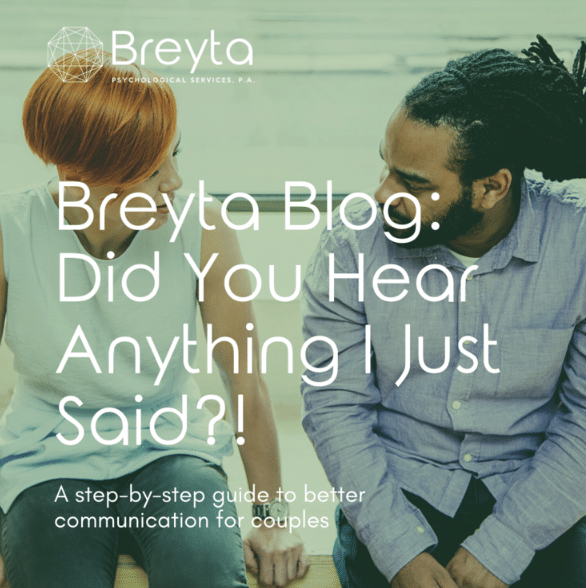Promoting Validation and Understanding in Your Relationship Through Effective Communication
I often see couples arguing but not effectively communicating. While one partner vulnerably shares, the other partner is listening to their internal dialogue, waiting, anticipating, planning the perfect response to the point their partner isn’t making. They map out the conflict instead of engaging in the conversation. This is very common, all of us have been on both sides of this type of arguing at some point in our lives. However, when you find yourself in this cycle frequently you may be feeling burnt out and exhausted.
If this sounds familiar the steps below can help you create healthier communication habits to increase validation, respect, and understanding between you and your partner, while lowering defenses, miscommunication, and escalation.
Speaker-Listener Activity:
Step one – Grab a piece of paper or a notebook, and something to write with.
Step two – Assign roles by choosing one partner to be The Speaker and one partner to be The Listener. Typically, the speaker is the partner who initiated the conversation.
Step three – The Speaker discusses their thoughts and feelings with The Listener. The Listener writes down what they hear The Speaker saying. This does not have to be a verbatim account but try to include the highlights of the message.
Step four – When The Speaker is done sharing their thoughts and feelings The Listener repeats back their understanding of what they just heard based on their notes. The Listener can ask follow-up questions “is that right?” or “did I miss anything?” At this point, the speaker can clarify points or add missed information.
Step five – Switch roles to provide the opportunity for each partner to be in a speaker and a listener role.
Helpful tips and tricks:
- The Speaker should use the sentence structure “I feel ________ because/when _______” to decrease defensiveness and wording which could be perceived as an attack by putting their needs or emotions before the behavior.
- Use factual language (observable behaviors) instead of interpretations of behavior. If I use the sentence structure from above I could say to my partner “I feel frustrated when I come home from work and the dishes are in the sink” instead of “you are so lazy and I always have to do the dishes” The dishes being left in the sink is an observable behavior, whereas lazy is an interpretation of behavior.
- The Listener should only respond with the things they heard their thoughts or rebuttals to what was stated.
- Talk with your partner ahead of time about this exercise and practice with lower stake, more neutral discussions. This can prevent surprises or having to troubleshoot while emotions are running high.
- Validation, validation, validation! Validation is communicating to your partner their feelings make sense and are understood. An example of validation would be “I know you are upset with me right now. I would be frustrated too if I felt I was taking on an unequal share of the household responsibilities.” The key to validation is to restate what you heard and provide justification for feeling that emotion.
Eventually, the goal for this exercise is for this style of communication to become a natural process without the aids of paper and pencil. Through practicing this exercise, you will learn to be a better listener and speaker even when things feel heated. Good luck practicing and communicating!





